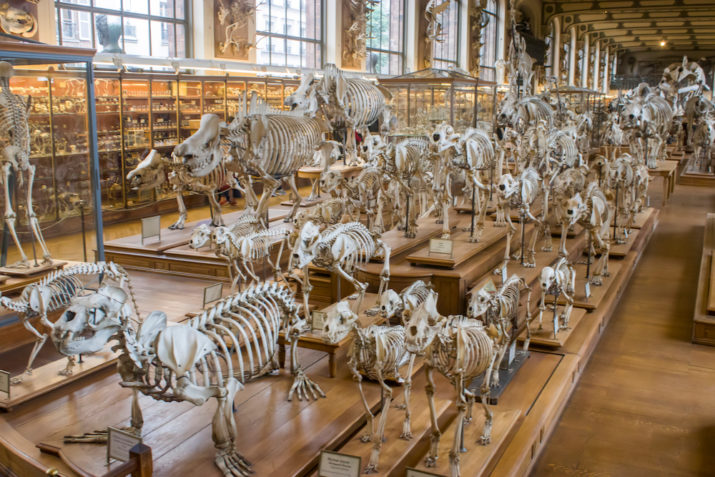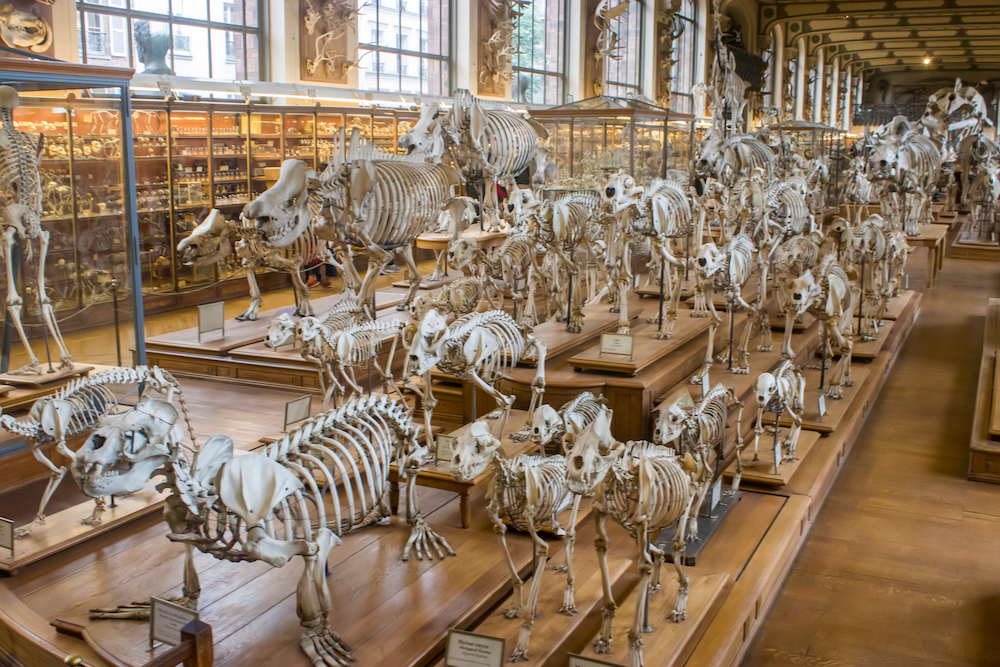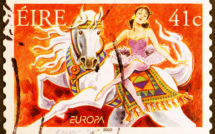

This is part of our special feature, Rethinking the Human in a Multispecies World.
Dark tourism, or thanatourism, is a complex subset of the tourism industry, which capitalizes on human death and suffering from human and environmentally induced events. It is defined as “visitations to places where tragedies or historically noteworthy death has occurred and that continue to impact our lives” (Tarlow 2005, 48), or “a quest to experience a disaster from a safe place” (Martini and Buda 2020, 684). The allure of DT stems from its ability, indeed, its modus operandi, of exposing particularities of people, place, and culture to reveal ontological anxieties about the past and the future (Stone 2013). As such, it allows tourists who visit sites of natural disasters, tragedies, massacres, executions, or other eccentricities that took place in the past (Kulcsar and Simon 2015) to reflect on their mortality in the context of modern society’s penchant for keeping death “sequestered” (Stone and Sharpley 2008) and sheltered from the realities of life.
Recent work now confirms the link between animals, tourists, and the darker side of the tourism industry (López López and Quintero Venegas 2021). We seek to amplify tourism and animal studies literature through the development of a novel typology, or “proto typology,” designed to classify animals as dark tourism (DT) attractions. Dark tourism has been applied almost entirely in a human context, with several well-developed definitions, frameworks and empirical studies. However, given how rapidly animal studies research is advancing within tourism studies, our attempt at a classification represents a natural progression of thought on animals as entangled, active agents (Alaimo and Hekman 2008) in tourism.
Supply and consumption of dark tourism
Typologies of dark tourism supply have been developed before. Stone’s (2006, 152-157) “Seven Dark Suppliers” of dark tourism products provides a good understanding of their range:
- Dark fun factories include attractions that have a high degree of infrastructure and entertainment value with a robust commercial ethic, and that offer real or fictional death and macabre events (e.g., the London Dungeon, or the Dracula Park in Romania);
- Dark exhibitions propose product designs that reflect education and potential learning opportunities (e.g., 9/11 terrorist attack artifacts at the Smithsonian);
- Dark dungeons represent attractions related to bygone penal and justice codes (e.g., the Old Melbourne Gaol in Australia);
- Dark resting places are cemetery sites where history-centric, conservational, and commemorative ethics intervene (e.g., the Père-Lachaise cemetery in Paris);
- Dark shrines constitute informal attractions close to death sites within a short time period of the death (e.g., the temporary shrine constructed at the gates of Kensington Palace after the death of Princess Diana, later moved to Althorp House);
- Dark conflict areas (e.g., battlefields, war-related attractions) are history-centric, war related, educational, and commemorative sites that are becoming more commercialized with increasing tourism infrastructure (e.g., Ypres and the Somme);
- Dark camps of genocide that stand as the darkest edge of the dark tourism spectrum, as their central thanatological themes are based on genocide, atrocity, and catastrophe (e.g., Auschwitz-Birkenau). Noteworthy in the provision of dark tourism attractions is authenticity. Those sites that possess a higher degree of locational authenticity are viewed as “darker” (Miles 2002).
Considerable attention has been placed on the psychology of consumers of dark tourism experiences. The list of motivations for visiting DT sites includes curiosity, entertainment, empathetic identification, compassion, nationalism, pilgrimage, event validation, remembrance, identity-seeking (family connection), honoring ancestors, education, social responsibility or moral duty, and the desire for contact and connection to death, black events, and violence (Ashworth 2004; Farmaki 2013; Light 2017; Seaton 1996; Tarlow 2005; Dunkley, Morgan, and Westwood 2011; Biran, Poria, and Oren 2011). Dark tourism sites generate a wide range of emotional states (Nawjin, Isaac, van Leimpt, and Gridnevskiy 2016), including anger (Israfilova and Khoo-Lattimore 2018), disgust (Podoshen et al. 2015), shock and fear (Buda 2015), hope (Koleth 2014), denial (Stone 2013), and pride (Cheal and Griffin 2013). They also induce empathy based on the ability to connect the atrocities that took place there with the degree of suffering experienced by individuals and groups (Ashworth 2004).
Animals as dark tourism attractions
The present study aims to push the animal ethics literature in a new direction by presenting a novel framework based on the confluence of dark tourism and animal ethics literature. The tourism and animal ethics sub-field is relatively new (Fennell 2000), but has advanced steadily as a flurry of recent studies have attempted to define it (Fennell 2012; Markwell 2015; Carr and Broom 2018; Kline 2018; Rickly and Kline 2021). Some studies have also defined the conditions around the engagement of animals and the tourism industry based on setting, mode of engagement, animals’ state, and mediators (Cohen 2009); and others have modelled how suffering could be eliminated in tourism (Fennell and Thomsen, 2021). Studies are also closing the gap between industry and research by providing tourists with the ability to measure animal welfare, governance, and conservation through a rating of whether care to animals is “deep,” “intermediate,” “shallow” or “just” (Fennell et al. in press).
The prototype includes three main categories and nine sub-categories, designed to incorporate a broad spectrum of factors that define the relationship between humans and animals in tourism.
Animal dark tourism proto typology (prototype)
A. Characteristics of animal suffering and death
Status & Setting
- Dead animals in built environments (eg. museums)
- Captive live animals in built environments
- Animal representation in built settings (in story or fable)
- Dead animals in semi-built settings
- Live animals in semi-built settings
- Animal representation in semi-built settings
- Dead animals in wild settings
- Wild animals in wild settings
- Animal representation in wild settings
- Combination of above
Sources of suffering/death
- Human-induced: Humans are directly/indirectly responsible for death or suffering.
- Environmentally induced: The natural environment is directly/indirectly responsible for death or suffering.
- Both: Death or suffering a result of both humans and the environment.
- Natural causes: Animals suffer or die from natural causes.
- Unknown: Unknown reason for suffering or death.
Role of animal(s)
- Part of nature/pest: Free-living in nature or viewed as a detriment to social and commercial existence.
- Worker: Working in agriculture, porters, lifesavers, etc.
- Sport and subsistence: Hunted, fished, trapped for recreation and food.
- Competitor: Forced to compete against other animals or humans.
- Entertainment: Used primarily as entertainers for the pleasure and profit of humans.
- Education: Used primarily for educational purposes.
- Science and research: Used for science, research, or conservation.
- Spirituality: Used for spiritual celebrations or remembrance.
- Companionship: Used in building a cognitive/emotional/wellness bond with human(s) or other companion animals.
- Other: Other types of service to the tourism industry.
Temporal period
- Prehistoric: Animals referenced in prehistoric times.
- Historic: Animals referenced in historic times.
- Contemporary: Animals referenced in the present day.
- Combination: One or more periods of time.
The scale of suffering/death
- Individual animal: A single animal that dies/suffers through an intervention.
- Population (one species): More than one animal of the same species suffers or dies through an intervention.
- Community (more than one species): More than one species suffers or dies through an intervention.
- Ecosystem: Entire ecosystems decimated from the actions of human or the natural world.
B. Subjective/normative nature of animal-human relationship leading to suffering or death
The negative-positive emotional state of handlers
- Misothery: Emotions or attitudes of hatred, fear or disgust of animals as pests, threats, or other.
- Indifference: Neutral emotions and attitudes to the animal(s) part of the attraction.
- Theriophily: Emotions/attitudes of love or reverence for an animal/animal, including iconic or heroic animals
- Unknown: The status of the relationship is unknown.
Animal ethics theories describing how animals were/are used
- Anthropocentric: Primary moral value rests in the interests of human beings over all other aspects of the natural world.
- Contractarianism: Only rational beings (humans) can enter into contracts to maximise self-interest via cooperation; animals not rational.
- Ecocentrism: Value is placed on whole systems, not individual animals.
- Welfare: Animals can be used as long as mental and physical needs are a priority.
- Utilitarianism: Equal consideration of interests. The suffering of a being is counted equally with the like suffering of other beings.
- Ecofeminism/Care ethics: Value is placed on an ethic of responsibility/care, emphasising compassion, equity and need.
- Rights: Individuals (human and non-human) have inherent value as subjects-of-a-life.
- Posthumanism: Animals seen as active, entangled agents alongside humans and deserving of the same justice and rights.
C. Tourism industry demand and supply
Attitudes of tourists towards animals (Kellert 1984)
- Naturalistic: A primary interest in and affection for wildlife and the outdoors.
- Ecologistic: A primary concern for interrelationships between wildlife species and natural habitats.
- Humanistic: A primary interest in and strong affection for individual animals, principally pets.
- Moralistic: The right and wrong treatment of animals, with strong opposition to animal exploitation and cruelty.
- Scientistic: The physical attributes and biological functioning of animals.
- Aesthetic: A primary interest in the artistic and symbolic characteristics of animals.
- Utilitarian: A primary concern for the practical and material value of animals.
- Dominionistic: Primary satisfactions derived from mastery and control over animals, typically in sporting situations.
- Negativistic: Active avoidance of animals due to dislike or fear.
- Neutralistic: Passive avoidance of animals due to indifference and lack of interest.
- Varied: Tourists holding different attitudes; cognitive dissonance.
Dark tourism products/supply (Stone 2006)
- Dark fun factories: A high degree of infrastructure & entertainment with a robust commercial ethic, presenting real or fictional events.
- Dark exhibitions: Product designs that reflect education and potential learning opportunities.
- Dark dungeons: Attractions related to bygone penal and justice codes.
- Dark resting places: Include cemetery sites based on history-centric, conservational and commemorative ethics.
- Dark shrines: Informal attractions close to the site of death and within a short period of the death occurring.
- Dark conflict areas: Sites (e.g., battlefields) that are history centric, war-related, educational, commemorative, & commercialised.
- Dark camps of genocide: The darkest edge of dark tourism based on genocide, atrocity and catastrophe as the central thanatological theme.
The first domain, “Characteristics of animal suffering and death,” incorporates five sub-categories that define basic features of how animals have been (or are being) used. These include the status and setting of animals killed or that suffer; the source of suffering or death; the role of animals; temporal period of use; and the scale of suffering or death. The second domain provides context around the subjective and normative (including cultural) dimensions of events that lead to suffering or death. Such includes the negative-positive emotional state of handlers, which range from hatred and fear of animals (misothery) to love and reverence (theriophily). A sub-category on animal ethics theories follows to describe how animals were (or are) being used to provide a theoretical lens to situate the human-animal relationship further. The third domain connects with aspects of demand and supply through reference to research by Kellert (1984) on attitudes of society towards animals, as well as the dark tourism product/supply typology developed by Stone (2006). Kellert (1984) acts as a proxy because, unlike the conventional research on dark tourism motivations, no such data currently exists for animals as dark tourism attractions.
Example of animal dark tourism: Head-Smashed-In Buffalo Jump
Head-Smashed-In Buffalo Jump is a World Heritage Site and provincial park in Alberta, Canada. The park documents how indigenous people over several centuries used group hunting techniques to channel buffalo in a manner that forced them to plummet over a cliff that is 11m high and 300m long. Members of the tribe waited at the bottom and used clubs and spears to kill the buffalos since their broken legs prevented them from getting away. While this human story has been told, it is also possible to view this attraction through an animal dark tourism lens. According to our classification, buffalos died in a wild setting; death was human-induced; the role of animals was for subsistence (now educational); the event took place during prehistoric times; and suffering/death of buffalos occurred at the population (species) scale. Furthermore, there is a tradition in indigenous culture to respect the animal as it gives its life for human sustenance. As such, theriophily (reverence for animals) is suggested, although the primary animal ethical focus would still be anthropocentric given the nature of the animal-human relationship. The relationship is ecocentric if indigenous people actively practiced conservation of the buffalo population. Tourists might view this practice as “varied”, experiencing cognitive dissonance along moralistic, utilitarian, or dominionistic lines. Finally, this type of dark tourism attraction corresponds to Stone’s (2006) dark resting places, likened to a cemetery or a site of commemorative ethics.
Along these lines, Table 1 classifies other animal dark tourism examples. These include museums of natural history, zones of war and human conflict, European animal extinctions, bullfighting in Spain, and zoos and aquaria with a focus on Marius the giraffe in Copenhagen. All examples have been selected to represent most of Stone’s (2006) dark tourism spectrum. The only type of dark tourism attraction not included in Table 1 is dark dungeons (see Rollin 2012, who discusses, in general, the site where Descartes conducted vivisections on dogs and other animals).
Table 1: Animal dark tourism examples
| Categories of Animal Dark Tourism | Museums of natural history, or “Dead zoos” (Barrington 2021) | Japanese animal shrines (Nara Park 2019) | Zones of war and human conflict (Wise 2021) |
| Status & setting | Dead animals; built site | Dead animals; wild site | Dead & alive; combined settings |
| Source of death/suffering | Unknown | Unknown | Human-induced |
| Role of animals | Education; Science & Research | Spirituality | Part of nature; Educator |
| Temporal period | Contemporary | Historical | Contemporary |
| The scale of death/suffering | Community-level | individual animal | Community |
| Negative-positive emotive state of handlers | Unknown | Theriophily | Indifference |
| Primary theory of ethics | Ecocentrism | Care ethics | Anthropocentric |
| Tourist attitudes of animals | Scientistic | Humanistic | Moralistic |
| Dark tourism products/supply | Dark exhibitions | Dark shrines | Dark conflict zones |
| Categories of Animal Dark Tourism | European animal extinctions (e.g., Caspian tiger) (IUCN 2015-2016) | Bullfighting in Spain (Oakley 2016) | Zoos and aquaria (e.g., Marius the giraffe, Copenhagen) (Cohen and Fennell 2016; Howley 2015) |
| Status and setting | Dead; wild setting | Alive – Dead; built setting | Live animals; built site |
| Source of death/suffering | Human-induced | Human-induced | Human-induced |
| Role of animals | Competitor; Spirituality | Competitors | Mainly as entertainer |
| Temporal period | Historical | Contemporary | Contemporary |
| The scale of death/suffering | Population | Population | Individual animal |
| Negative-positive emotive state of handlers | Misothery | Indifference | Indifference |
| Primary theory of ethics | Anthropocentric | Contractarianism | Ecocentrism |
| Tourist attitudes of animals | Ecologistic | Dominionistic | Varied: scientistic to moralistic |
| Dark tourism products/supply | Dark camps of genocide | Dark fun factories | Dark exhibitions |
Emerging from the dark
The prototype developed in this article assumes that animal dark tourism will become a realistic option for the industry in the future. There is little doubt that events, places, or situations where animals have been abused stir human emotion. Since animal ethics considerations have been quickly absorbed into the tourism studies literature, we believe that our prototype is likely to elicit scholarly interest. However, acceptance in the industry will most certainly depend on whether there is demand for such attractions.
Our typology provides avenues for thinking about future research in the field of animal dark tourism. Future work should seek to investigate both supply and demand in dark tourism to determine whether the suffering or death of animals can be considered “legitimate” sites of dark tourism. Moreover, classifying animal dark tourism attractions along “lightest” to “darkest” lines would also be useful to both scholars and practitioners, and researchers might also survey dark tourism scholars (through Delphi or other techniques) to analyze how they react to pictures and descriptions of animal sites when re-defining the borders of dark tourism. Such an approach would be helpful in refining the categories and sub-categories of animal dark tourism we propose. In agreement with López López and Quintero Venegas (2021), our research adopts a posthumanist perspective that moves us away from humanism and anthropocentrism (and the Cartesian dualisms inherent within it). Instead, we operate a paradigm shift towards a breaking down of barriers between humans and animals (Cohen 2019; Thomsen 2021) and new ways of doing/being/knowing (ethico-onto-epistemology) (Kuby 2017) that envisage humans and animals as entangled agents (Alaimo and Hekman 2008) in the complex world of tourism.
David A. Fennell, PhD, is a Professor at Brock University who researches mainly in the areas of ecotourism, tourism ethics, and moral issues tied to the use of animals in the tourism industry, and sustainability. A major thrust of his research involves the use of theory from other disciplines (e.g., biology, philosophy) to gain traction on many of tourism’s most persistent issues and problems. Fennell is the founding Editor-in-Chief of the Journal of Ecotourism.
Bastian Thomsen, PhD, is an Assistant Professor in the Human Dimensions of Natural Resources Department at Colorado State University. His research intersects tourism, conservation, and social responsibility with a particular focus on wildlife-human relations and multispecies livelihoods.
Samuel R. Fennell is a PhD candidate in the Department of Human Dimensions of Natural Resources at Colorado State University. He has interests in cultural anthropology and social psychology as they relate to the cause and consequences of human behavior in natural settings.
References
Alaimo, Stacy, and Susan Hekman. (Eds.). 2008. Material Feminisms. Bloomington, IN: Indiana University Press.
Ashworth, Gregory. J. 2004. Tourism and the Heritage of Atrocity: Managing the Heritage of South African. In eprints-book-titles.n.
Barrington, Kevin. 2021. “Museum Dublin: The Dead Zoo.” Retrieved at https://dublin.ie/live/stories/museum-dublin-the-dead-zoo/
Biran, Avital, Yaniv Poria, and Gila Oren. 2011. ‘‘Sought Experiences at Dark Heritage Sites.’’ Annals of Tourism Research 38 (3): 820-841.
Buda, Dorina M. 2015. Affective Tourism: Dark Routes in Conflict. New York: Routledge.
Carr, Neil. and Donald M. Broom. 2018. Tourism and Animal Welfare. Wallingford, UK: CABI.
Cheal, Felicity, and Tony Griffin. 2013. “Pilgrims and Patriots: Australian Tourist Experiences at Gallipoli.” International Journal of Culture, Tourism and Hospitality Research 7 (3): 227–241. https://doi.org/10.1108/IJCTHR-05-2012-0040
Cohen, Erik. 2009. “The Wild and the Humanized: Animals in Thai Tourism. Anatolia 20 (1): 100-118.
Cohen, Erik. 2019. “Posthumanism and tourism.” Tourism Review 74 (3): 416-427.
Cohen, Erik. and David Fennell. 2016. “The Elimination of Marius, the Giraffe: Humanitarian Act or Callous Management Decision?” Tourism Recreation Research 41 (2): 168-176, DOI: 10.1080/02508281.2016.1147211
Dunkley, Ria, Nigel Morgan, and Sheena Westwood. 2011. “Visiting the Trenches: Exploring Meanings and Motivations in Battlefield Tourism.” Tourism Management 32 (4): 860-868. doi:10.1016/j.tourman.2010.07.011
Farmaki, Anna. 2013. Dark Tourism Revisited: A Supply/demand Conceptualisation. International Journal of Culture, Tourism and Hospitality Research 7 (3): 281–292. DOI: 10.1108/ijcthr-05-2012-0030.
Fennell, David. 2000. “Tourism and Applied Ethics.” Tourism Recreation Research 25 (1): 59-70.
Fennell, David. 2012. Tourism and Animal Ethics. London: Routledge.
Fennell, David, Tom Moorhouse, Neil D’Cruze, and David MacDonald. In. press. Towards a Model for the Assessment of Conservation, Welfare, and Governance in Wildlife Tourism Attractions. Tourism Management,
Fennell, David, and Bastian Thomsen. 2021. Tourism and animal suffering: mapping the future. Annals of Tourism Research 91.
Hester, James. 1967. The agency of man in animal extinctions. In P.S. Martin and H.E. Wright (eds) Pleistocene Extinctions: The Search for a Cause (pp. 169–192). New Haven: Yale University Press.
Kellert, Stephen. 1984. “American attitudes toward and knowledge of animals: An update.” In Advances in Animal Welfare Science 1984/85, edited by M.W. Fox and L.D. Mickley, 177-213. Washington, DC: The Humane Society of the United States.
Kline, Carol. 2018, ed. Animals, Food, and Tourism. London: Routledge.
Kuby, Candace. 2017. “Why a Paradigm Shift of ‘More Than Human Ontologies’ is Needed: Putting to Work Poststructural and Posthuman Theories in Writers’ Studio.” International Journal of Qualitative Studies in Education 30 (9), 877-896, DOI:10.1080/09518398.2017.1336803
Howley, Kerry. 2015. What We Mourned When We Mourned Cecil. Retrieved at https://www.newyorker.com/books/page-turner/what-we-mourned-when-we-mourned-cecil
Israfilova, Firangiz, and Catheryn Khoo-Lattimore. 2019. Sad and Violent but I Enjoy It: Children’s Engagement with Dark Tourism as an Educational Tool. Tourism and Hospitality Research 19 (4): 478–487. https://doi.org/10.1177/1467358418782736
IUCN. 2015-2016. Caspian Tiger. Retrieved at https://endangeredlist.org/animal/caspian-tiger/
Koleth, Maria. 2014. Hope in the Dark: Geographies of Volunteer and Dark Tourism in Cambodia. Cultural Geographies 21 (4): 681–694. https://doi.org/10.1177/1474474013519577
Kulcsár, Erika. and Rozalina Simon. 2015. “The Magic of Dark Tourism.” Management & Marketing XIII (1): 124–136. Retrieved from https://doaj.org/article/e16ff8fa85f948518cdc9c230d882f23
Light, Duncan. 2017. “Progress in Dark Tourism and Thanatourism Research: An Uneasy Relationship with Heritage Tourism.” Tourism Management 61 (C), 275–301. https://doi.org/10.1016/j.tourman.2017.01.011.
López- López, Álvaro, and Gino Quintero Venegas. 2021. “Animal Dark Tourism in Mexico: Bulls Performing Their Own Slaughter.” In Exploring Non-human Work in Tourism: From Beasts of Burden to Animal Ambassadors, edited by J. Rickly and C. Kline, C, 69-82. Berlin: De Gruyter
Markwell, Kevin, ed. 2015. Birds, Beasts and Tourists: Human-Animal Relations in Tourism. Clevedon, UK: Channel View
Miles, William. 2002. “Auschwitz: Museum Interpretation and Darker Tourism.” Annals of Tourism Research 29 (4): 1175–1178.
Martini, Annaclaudia, and Dorina Buda. 2020. “Dark Tourism and Affect: Framing Places of Death and Disaster.” Current Issues in Tourism 23 (6): 679-692.
Nara Park (2019). “Temples and shrines for animal lovers.” Retrieved at https://www.visitnara.jp/lists-and-stories/story/temples-and-shrines-for-animal-lovers/
Nawijn, Jeroen, Rami Isaac, Adriaan van Liempt, A., and Konstantin Gridnevskiy. 2016. “Emotion Clusters for Concentration Camp Memorials”. Annals of Tourism Research 61: 244–247. https://doi.org/10.1016/j.annals.2016.09.005
Oakley, Nicola. 2016. “Why people want “cruel” and “barbaric” bullfighting banned – and it’s nothing to do with a matador’s death.” Retrieved at https://www.mirror.co.uk/news/world-news/people-want-cruel-barbaric-bullfighting-8397382
Podoshen, Jeffrey, Vivek Venkatesh, Jason Wallin, Susan Andrzejewski, & Zheng Jin. 2015. “Dystopian Dark Tourism: An Exploratory Examination.” Tourism Management 51: 316–328. https://doi.org/10.1016/j.tourman.2015.05.002
Rickly, Jillian, and Carol Kline, eds. 2021. Exploring Non-human Work in Tourism: From Beasts of Burden to Animal Ambassadors. Berlin: De Gruyter
Rollin, Bernard. (2012). “Do animals feel pain?” Retrieved at https://youtu.be/zZc1HnOCtSk
Seaton, Anthony. 1996. Guided by the Dark: From Thanatopsis to Thanatourism. International Journal of Heritage Studies 2 (4): 234–244.
Sharpley, Richard. 2005. “Travels to the Edge of Darkness: Towards a Typology of ‘Dark Tourism.’” In Taking Tourism to the Limits: Issues, Concepts and Management Perspectives, edited by Chris Ryan, Stephen J. Page and Michelle Aicken, 215-226. London: Taylor & Francis. DOI: 10.1016/b978-0-08-044644-8.50023-0
Stone, Philip. 2006. “A Dark Tourism Spectrum: Towards a Typology of Death and Macabre Related Tourist Sites, Attractions and Exhibitions.” Tourism: An International Interdisciplinary Journal 54 (2): 145-160. Retrieved from https://hrcak.srce.hr/161464
Stone, Philip, and Richard Sharpley. 2008. “Consuming Dark Tourism: A Thanatological Perspective.” Annals of Tourism Research 35 (2): 574–595. DOI: 10.1016/j.annals.2008.02.003
Stone, Philip. 2013. “Dark tourism scholarship: a critical review.” International Journal of Culture, Tourism and Hospitality Research 7 (3): 307–318. https://doi.org/10.1108/IJCTHR-06-2013-0039
Tarlow, Peter. 2005. “Dark Tourism: The Appealing ‘Dark’ Side of Tourism and More.” In Niche Tourism: Contemporary Issues, Trends and Cases, edited by M. Novelli, 47-57. Oxford: Elsevier.
Thomsen, Bastian. 2021. “Wolf Ecotourism: A Posthumanist Approach to Wildlife Ecotourism.” In Routledge Handbook of Ecotourism, edited by David A. Fennell, 1-26. London: Routledge.
Wise, Nick. 2021. “The Humanitarian Economy: Animals Caught in the Crossfire.” In Routledge Handbook of Ecotourism, edited by D. A. Fennell, 1-26. London: Routledge.
Photo: Paris France Jun 11th 2018: the skeletons of different mammals in Gallery of Paleontology and Comparative Anatomy of National Museum of Natural History | Shutterstock
Published on November 9, 2021




